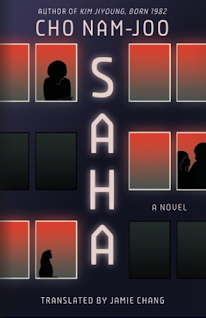With aging comes loss, and for Tom Kettle the protagonist of Old God's Time by Sebastian Barry, life is essentially over. Retired as a policeman, he lives alone. His wife and two adult children are dead. Friends are few, though on good days, he has visions old friends, acquaintances and maybe even some ghosts.
Both he and his wife grew up with abuse from priests, notorious in Ireland’s Catholic orphanages. With his memory slipping, Kettle is an unreliable narrator both for himself and others. Pleasant memories, vague and dreamy like fog forming over the sea, are difficult to retain; negative ones prick deep and mean like sharp ice. The stories he recalls often seem incomplete, with additional circumstances and context shared later. He recalls his past with any activity, any trip: “Every single place… a peg with a memory hanging from it.” And when he returns to the city, “memories are lying in ambush everywhere.”
Like memories, his surroundings serve as both reminders and distractions. “If he were looking for citizenship, it might be of this miraculous bay. Child of nowhere, he could claim rights over this, this vast vacancy queerly filled, both empty and full. He was just an old policeman with a buckled heart, but if he had known how, he would have sucked the whole vista into himself, every grain of salt and sand and sea, swallowed it whole… All this blue and different blue and greens and acres of blown white, and the mysterious golds and silvers of after-rain. He knew he knew he was in trouble, he could sense the trouble with his copper’s instinct and didn’t yet know its shape, but the bay also released him somehow, let him go for a blessed minute into some wild freedom, so that his heart and soul were both shaken and renewed, in the same moment, in the same breath.”
After being away from the job, two colleagues from his station visit, claiming to need his help on an old case involving “the priests in the sixties.” Kettle, old and vulnerable, responds spontaneously: “The absolute suffering. There was no one to help me.” He immediately regrets using the word “me” rather than “them.” The old policeman cares about the child victims of the abusive priests, not quite realizing that the others regard him as suspect.
The investigators seek his DNA, intent on resolving an old case, the murder of a priest known to both Kettle and his wife. But Kettle had long been part of a system that masked scandals, covered evidence, to protect reputations.
Kettle varies between wanting to be useful and left alone, between companionship and solitude. Once the two leave, he misses his inquisitors: “he was stunned to discover, missed them like his own children, a huge ache of loss, which was not logical at all. They had a nice time together, despite everything, but that was all. But he felt it like a bereavement. He had enjoyed the talk. He had. A mystery. Their warmth and kindness. He wondered should he do more of it. Human contact. He wasn’t sure. It was a disturbing thought somehow, like he was betraying a secret, but whose?” Before long, he comes to realize that “He was less confused even if he was confused.”
The old policeman knows who killed the priest, but divulges nothing without manipulation or lies. Instead, he drifts among multiple tragic memories, some of the experiences surely instigated and compounded by his family's history of abuse. That a murder of a priest could take precedence over the systemic abuse of dozens or hundreds of children, by “a murderer of children’s hearts,” is deplorable. And that may partly explain why, besides his loneliness and dementia, Kettle initially fails to realize the purpose behind the visits from investigators.
The man could suffer no greater loss than that of his wife and children, and a sort of weightlessness accompanies such knowledge. “There was a fire of freedom in it. There was a curious wash of something freely called happiness.”







